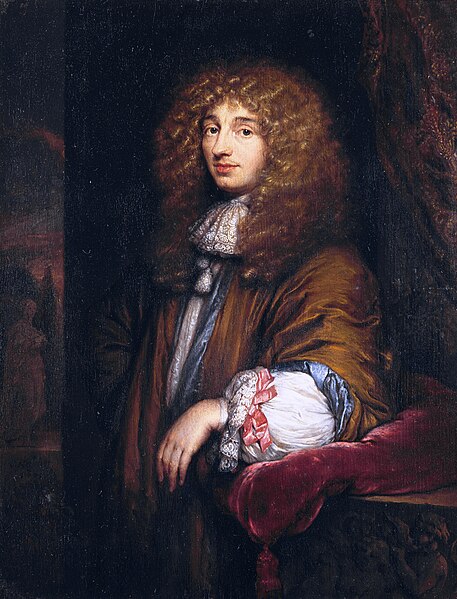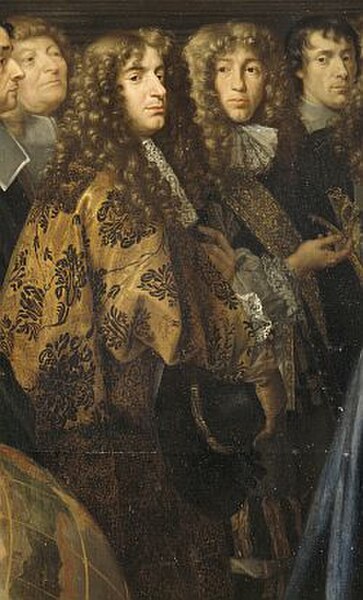Horologium Oscillatorium: Sive de Motu Pendulorum ad Horologia Aptato Demonstrationes Geometricae is a book published by Dutch mathematician and physicist Christiaan Huygens in 1673 and his major work on pendula and horology. It is regarded as one of the three most important works on mechanics in the 17th century, the other two being Galileo’s Discourses and Mathematical Demonstrations Relating to Two New Sciences (1638) and Newton’s Philosophiæ Naturalis Principia Mathematica (1687).
Horologium Oscillatorium
Invention of the pendulum clock by Christiaan Huygens by Georg Sturm (c. 1885)
Huygens's pendulum clock from Horologium Oscillatorium (1673).
Huygens's mathematical style from Horologium Oscillatorium, Part II.
Christiaan Huygens, Lord of Zeelhem, was a Dutch mathematician, physicist, engineer, astronomer, and inventor who is regarded as a key figure in the Scientific Revolution. In physics, Huygens made seminal contributions to optics and mechanics, while as an astronomer he studied the rings of Saturn and discovered its largest moon, Titan. As an engineer and inventor, he improved the design of telescopes and invented the pendulum clock, the most accurate timekeeper for almost 300 years. A talented mathematician and physicist, his works contain the first idealization of a physical problem by a set of mathematical parameters, and the first mathematical and mechanistic explanation of an unobservable physical phenomenon.
Huygens by Caspar Netscher (1671), Museum Boerhaave, Leiden
Christiaan Huygens, relief by Jean-Jacques Clérion (c. 1670).
Huygens, right of centre, from L'établissement de l'Académie des Sciences et fondation de l'observatoire, 1666 by Henri Testelin (c. 1675).
Hofwijck, Huygens's summer home; now a museum.








